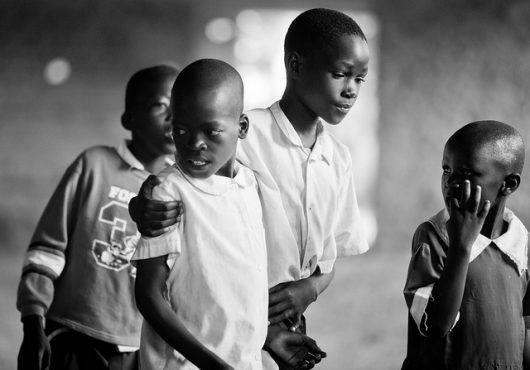Top 10 Facts About Human Rights in Kenya

The World Bank, in its latest report on Kenya, credited the country with possessing the potential to become one of Africa’s success stories. From its growing youthful population and dynamic private sector to its highly skilled workforce, improved infrastructure and new Constitution, Kenya plays a pivotal role in East Africa. However, Kenya continues to struggle with the protection of the basic human rights of its people. The top 10 facts about human rights in Kenya below shed light on the inequalities faced by the Kenyan people and the organizations working to improve conditions.
Top 10 Facts About Human Rights in Kenya
- From 2007 to 2008, Kenya received international attention and criticism for severe violation of human rights after the re-election of President Uhuru Kenyatta. While the political party in power challenged the independence of the judiciary, and the police manhandled opposition protestors, the NGOs Coordination Board threatened to close down human rights organizations. Administrative and legal measures were adopted to curb the activities of civil society, media and human rights organizations.
- Human Rights Watch confirmed that the post-election human rights violations included sexual and gender-based violence against men, women and children in Kenya by the police and security forces.
- In 2010, in an attempt to address the past human rights abuses and injustices, Kenya adopted a new Constitution alongside a Commission to implement it.
- The Human Rights Watch, in its 2016 report, criticized the country’s inaction. The criticism was aimed at Kenya’s ineffective implementation of the new Constitution and lack of addressing the post-election human rights violations of 2007 and 2008. These violations left at least 1,200 people dead and 650,000 people displaced.
- Amnesty International questioned the government’s legislative curtailment of basic rights of the people, media and refugee communities. As a response to the persistent terrorist attacks and killings orchestrated by Somalia-based Islamist group Al-Shabaab, the Kenyan government increased the power of the police and security agencies. This, in turn, led to extrajudicial killings, disappearances, arbitrary detentions, raids on communities, harassment and extortion of money.
- The Amnesty International Annual Report for 2017/18 lauded the “landmark judicial decisions on human rights” by the Kenya High Court stopping the government’s decision to close the Dadaab refugee camp. Dadaab is the world’s largest refugee camp, and the decision prevented the return of 250,000 refugees to Somalia, where they would have been at risk of abuse.
- Outside the scope of political turmoil, there are also issues of the rights of women and children in the country. In 2016, the National Gender and Equality Commission released a report titled Gender-Based Violence in Kenya. According to its study, 39 percent of women and girls aged 15 years and above have encountered physical violence, and more than one-fifth of the women have been victims of sexual abuse. Domestic abuse has also been noted as a common problem in Kenya. Acts like the Prohibition of Female Genital Mutilation (2011), Employment Act (2007), the Protection Against Domestic Violence (2015) and the National Policy on the Prevention and Response to Gender-based Violence (2014), have been introduced to promote social justice and preserve the rights of women in the country.
- Kenya’s Vision 2030’s Medium-Term Plan II (for 2013 to 2017) outlined the establishment of gender-based violence recovery centers in all health care facilities in Kenya. The National Gender and Equality Commission has also developed a National Monitoring and Evaluation Framework to prevent such violence. Organizations like Childline Kenya in partnership with the government have been trying to stop the high instances of child abuse prevalent in the country. The National Policy on the Elimination of Child Labor and the Kenyan police’s Child Protection Unit have been introduced to prosecute and investigate child exploitation.
- Clashes between different ethnicities in Kenya, which initially began in 1991, have also emerged as one of the human rights issues in the country. Certain ethnic communities, like the Sengwer, have been in conflict with the government. This year, the European Union suspended it’s Water Towers Protection and Climate Change Mitigation and Adaptation Programme due to the killing of a person by the Kenya Wildlife Service. The EU stated that the rights of indigenous people must be respected and balanced with the conservation work on water towers.
- The Kenya Human Rights Commission has been striving to foster human rights and democracy at all levels in Kenya. To add to that, The Kenya National Commission of Human Rights acts in an advisory role and as a watchdog to promote a culture of human rights in Kenya.
In July 2018, members of The United Nations Working Group on Business and Human Rights, following their visit to Kenya, appreciated the new Constitution’s efforts to improve human rights conditions and democratic institutions. In addition, the group underscored the need for delivering the promises of the constitution in order to secure human rights protection. Kenya is set to become the first country in Africa to develop a National Action Plan based on business and human rights. While these top 10 facts about human rights in Kenya demonstrate many areas in need of improvement, the Kenyan government has begun to take steps in a promising direction.
– Jayendrina Singha Ray
Photo: Flickr
